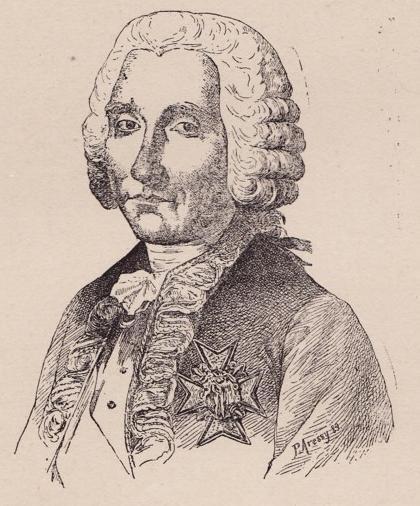Service/branch Engineers Name Pierre-Joseph Bourcet | Years of service 1718-1780 | |
 | ||
Rank Lieutenant-general des armees du roi Battles and wars War of the Austrian Succession, Seven Years' War | ||
Pierre-Joseph Bourcet (1 March 1700 – 14 October 1780) was a French tactician, general, chief of staff, mapmaker and military educator. He was the son of Daniel-Andre Bourcet and of Marie-Magdeleine Legier.
Contents
Life
Bourcet was born at Usseaux, in what is now Piedmont, northern Italy.
At 18 years old, he began serving under his father, a captain in the French armies in the Alps. He completed his training, studying maths, and became a gunner before entering the infantry and finally the engineers. With the support of M. d'Asfeld, he joined the engineers corps in 1729. A long military career followed, ending at the rank of lieutenant-general des armees du roi, in 1762, the highest rank in the ancien regime military. At the start of his career, he was a protege of the marechal de Maillebois, accompanying him on a secret reconnaissance mission to France's Alpine frontier. He was chief engineer at Mont-Dauphin, from c. 1742, succeeding M. de Pene, whose daughter Marie-Anne de Pene he married.
He acted as a French chief of staff during the War of the Austrian Succession and the Seven Years' War. In 1752, he accompanied M. de Paulmy in his tour of inspection of the Alps He was director of the fortifications at Dauphine from 1756 (appointed 1 June 1756) to 1777. At the end of 1759, he was made king's chief commissioner and charged with fixing the borders between France and Piedmont, a mission concluded by treaty on 24 March 1760. Under the direction of the minister of war, Choiseul, in 1764 he established a staff-officer training school at Grenoble (it disappeared in 1771), where he taught on mountain warfare.
An expert in mountain warfare, military engineering and fortifications, he devised the French invasion of Piedmont that led up to the Battle of Madonna dell'Olmo. He advocated officer training [1], a permanent staff corps and organised dispersion (having a large army march in separate columns along parallel roads, thus allowing them to be rapidly concentrated for attack or defence and to form three columns within each column and thus deploy onto the battlefield faster [2]). He devised the strategic concept of "a plan with branches" (keeping the enemy confused as to your destination, so he had to split his forces to defend more than one place at once).[3]
He died at Meylan without issue in 1780 - his heart is buried at the church of Notre-Dame du Laus.
